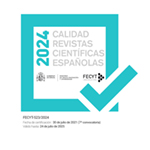La socialización infantil bilingüe en San Isidro Buensuceso, Tlaxcala, México
Resumen
En este artículo se analiza el proceso de socialización infantil practicado en San Isidro Buensuceso, Tlaxcala, México. En esta comunidad, a diferencia de los pueblos vecinos, el 77% de su población total es bilingüe náhuatl-español y sólo el 23% se declara monolingüe en la lengua castellana. Para conocer las prácticas de socialización infantil bilingüe y sus efectos en la vitalidad y desplazamiento del náhuatl se realizó una investigación etnográfica en la comunidad por espacio de 12 meses, teniendo como colaboradores focales a tres familias. La investigación revela que no existe un único tipo de socialización infantil, sino tres tendencias que van de más náhuatl a más español. Los resultados muestran dos fenómenos de gran relevancia, por un lado, el alto nivel de bilingüismo practicado en la comunidad, apoyado por un conjunto de ideologías lingüísticas que no condenan el uso de la lengua indígena, permite que muchos niños aprendan el náhuatl fuera de su familia nuclear, con primos, amigos o vecinos. Por otro lado, el hecho de que la mayoría de las personas hablen las dos lenguas no permite observar con claridad que muchos niños, quienes son calificados por sus padres como bilingües, manejan un conjunto de géneros muy limitado en lengua indígena. Este hecho dificulta la comprensión de que el proceso de desplazamiento sigue su curso y que éste debe ser analizado desde una perspectiva más conversacional pues en esta comunidad el desplazamiento lingüístico no se da como substitución de sistemas completos, sino mediante el abandono gradual de determinados géneros discursivos.Descargas
Descarga artículo
Licencia
La Revista Española de Antropología Americana, para fomentar el intercambio global del conocimiento, facilita el acceso sin restricciones a sus contenidos desde el momento de su publicación en la presente edición electrónica, y por eso es una revista de acceso abierto. Los originales publicados en esta revista son propiedad de la Universidad Complutense de Madrid y es obligatorio citar su procedencia en cualquier reproducción total o parcial. Todos los contenidos se distribuyen bajo una licencia de uso y distribución Creative Commons Reconocimiento 4.0 (CC BY 4.0). Esta circunstancia ha de hacerse constar expresamente de esta forma cuando sea necesario. Puede consultar la versión informativa y el texto legal de la licencia.









